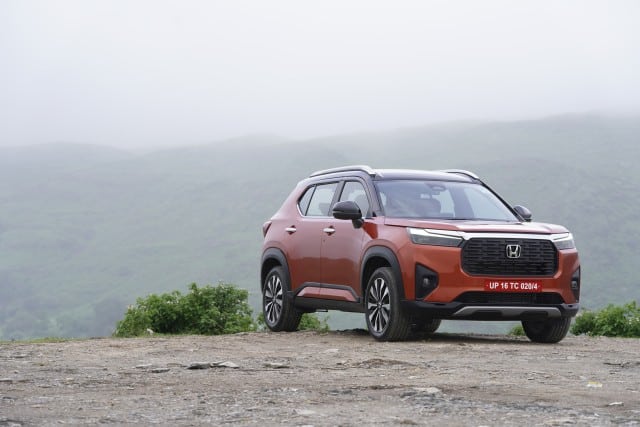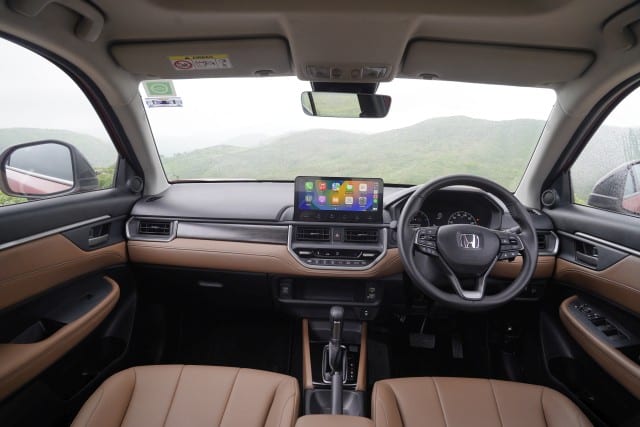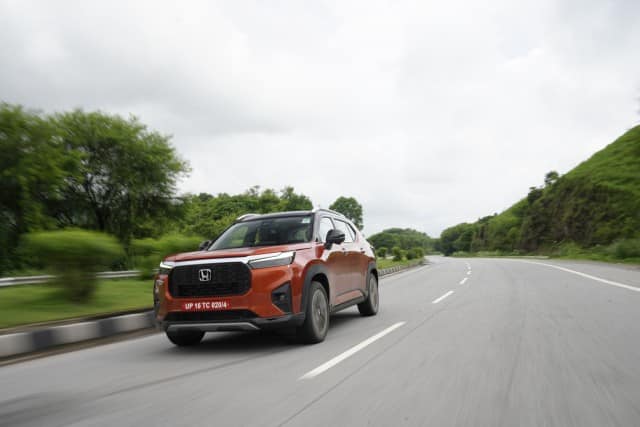The mid-size SUV arena is hot property and, with the Honda Elevate, the Japanese major has just thrown its hat into a battle royal of 4.3-metre-long contenders. We were in Udaipur to drive it.

Story: Jim Gorde
Photography: Sanjay Raikar
The world was abuzz with Honda news with the HR-V on one side and the ZR-V on the other, both of which crossed my mind—more the former than the latter—as the next entrant Honda had lined up for India. However, the anticipation was further elevated when it was revealed that it was going to be an India-first model that was also going to be made here and exported later. The Honda Elevate shares its underpinnings (and more) with the City, also being based on Honda’s global lightweight platform. That seems ironic considering it is set to go up against some heavyweight names. The segment consists of, take a deep breath, the Hyundai Creta, Kia Seltos, Škoda Kushaq, Volkswagen Taigun, Toyota Urban Cruiser Hyryder, Maruti Suzuki Grand Vitara, MG Astor and the upcoming Citroën C3 Aircross, all of which follow in the footsteps of the Renault Duster; the car I hold responsible for this mushrooming segment.
Right, then. The Honda Elevate is a reasonably imposing form with a large vertical grille and chunky lines and elements—notably the reinforced C- and D-pillar area which is one spread of metal outside and in. The LED headlamps look sharp, with daytime running light (DRL) strips nestled above them, connected by a chrome strip running across the edge of the bonnet. The side profile and tail-lamp clusters are reminiscent of some of its existing competitors, let alone other European models, this time round. It measures 4,312 millimetres long, 1,790 mm wide and 1,650 mm high, with a wheelbase of 2,650 mm; shorter in length compared to the City but more everywhere else. Overall, the proportions are boxy and very big-SUV like, with the contrasting upper section adorned with roof-rails. It does look purposeful and rather smart.

Inside the Honda Elevate, there are more than a few changes evident, most notably the new 10.25-inch, HD centre touchscreen, the padded panels on the doors, dashboard, and around the cabin complementing the brown leatherette upholstery, and the space. A bit of wood-like trim accents also seem like a nice touch. Plentiful storage is provided in the doors and console and there is even wireless charging, wireless Android Auto and Apple CarPlay with a nice slot for the phone and a button to start or stop the charging. The seats are extremely comfortable and the rear seats, having been designed to provide good back support, are even more so. The sunroof is a front unit that slides open and helps add to the airy feel of the cabin; or, in this case, closed, and ideal to watch the rain. The boot volume is a generous 458 litres, enough for more than a few big bags and then some.
Behind the wheel of the Honda Elevate is a smart driver information display with digital units to the left and centre and an analogue speedometer to the right—a nice touch in this day and age. The readout is clear and the functions are similar to the Honda City e:HEV we drove last year. In fact, the Elevate goes one up on the City; and not just because of its 220-millimetre ground clearance.




















Leave a Reply